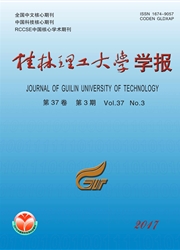

 中文摘要:
中文摘要:
为研究四川盆地南缘赤水地区断层相关褶皱特征,利用地震剖面结合钻井资料以及平衡剖面方法分析了赤水地区构造及其演化。赤水地区构造变形及演化主要受中上寒武统膏盐岩滑脱层控制,形成滑脱层上下不同的构造变形样式;滑脱层之上构造形成晚且变形强,滑脱层之下的地层构造稳定变形弱,形成断滑和断展的复合构造。赤水地区的变形受东、南两个方向区域构造应力叠加作用,二者无明显的先后。滑脱层之上构造圈闭形成晚,为该区晚期油气成藏提供有利的圈闭条件;滑脱层之下构造具有持续性,为以下寒武统烃源的震旦系灯影组古气藏的持续保藏提供了条件;向斜区构造较缓,仅发育大断层,次级断层不发育,为页岩气的保藏提供了条件。
 英文摘要:
英文摘要:
In order to study the characteristics of fault-related folds in Chishui area on the southeast margin of Sichuan basin,the structural and evolutionary characteristics are analysed by seismic profile combined with drilling data and equilibrium profile method.The results show that the structure deformation and evolution in this area are mainly controlled by the detachment layer in Middle-Upper Cambrian gypsum salt rock,forming different structural deformation styles between the detachment layers.Layers above the detachment layer structure formed later and the deformation is strong,while the under layer structural stability is weak,so the composite fault slip and fault propagation structure are formed.The deformation of Chishui area was affected by the regional tectonic stress from the east and south in the two directions,without obvious orders.Above the detachment layer structure traps formed later,favorable trap conditions provide the late region hydrocarbon accumulation.The structure under the slip layer is persistent and provided trap conditions of Sinian Dengying Formation in source rock of Low Cambrian Qiongzusi Formation.It provided the shale gas storage conditions in syncline area which has flat structure and only develops major faults without secondary faults.
 同期刊论文项目
同期刊论文项目
 同项目期刊论文
同项目期刊论文
 期刊信息
期刊信息
